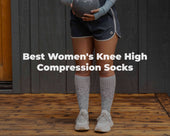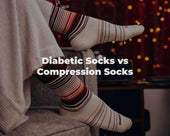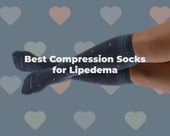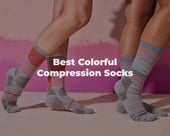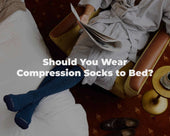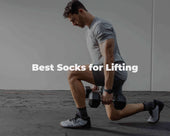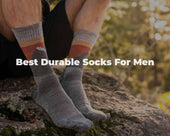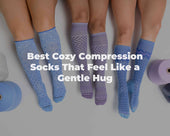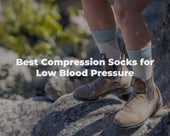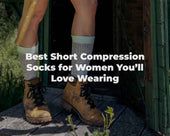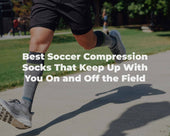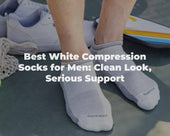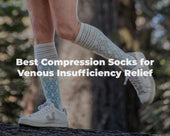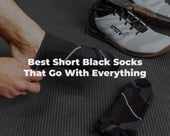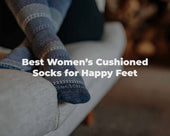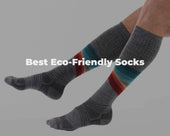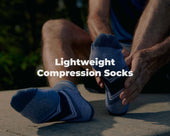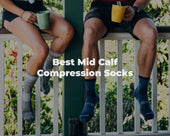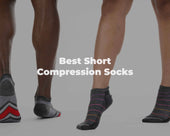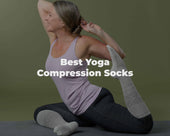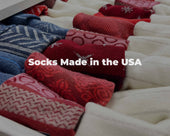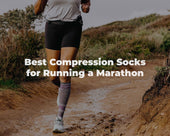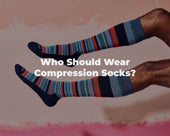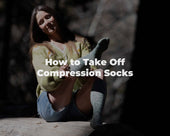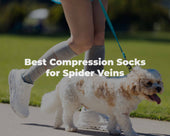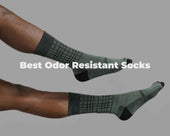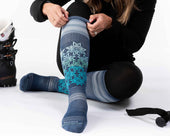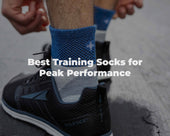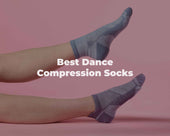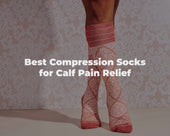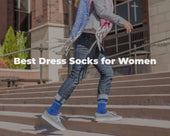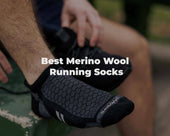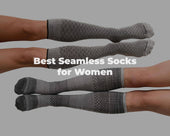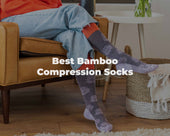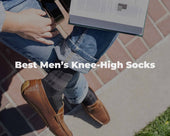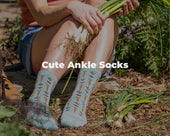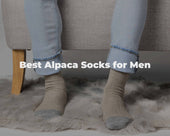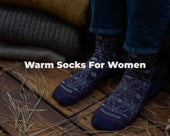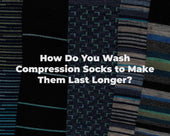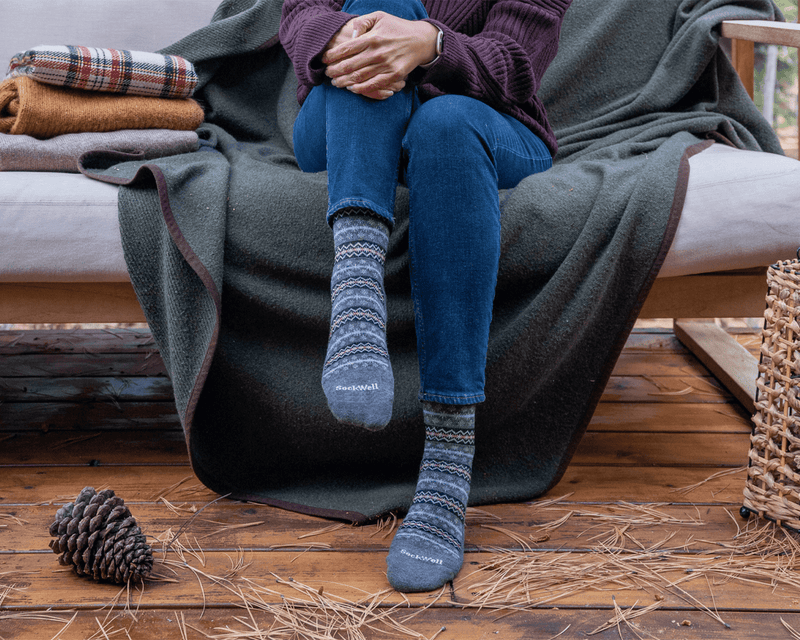
Tired of swollen legs and feet holding you back? Well, you're not alone. Whether you're on your feet all day or stuck at a desk, swelling can be uncomfortable and inconvenient. Discover how compression socks could be the overlooked solution you’re searching for.
Key Takeaways
-
Swelling, or edema, in legs and feet, can result from poor circulation, venous insufficiency, injury, pregnancy, or medical conditions. Recognizing the cause is crucial for effective management.
-
Compression socks come with different levels of pressure, usually indicated as mmHg. Mild to moderate swelling calls for 15-20 mmHg, while more severe swelling benefits from 20-30 mmHg.
-
Choose compression socks made of breathable materials like nylon, spandex, or merino wool. They should be snug but not excessively tight, offering a balance of comfort and effectiveness.
-
Wearing compression socks helps reduce swelling and promotes improved blood circulation, alleviating discomfort and preventing fluid build-up in the lower extremities.
-
Wear compression socks during long periods of standing or sitting, and avoid wearing them to bed. Ensure proper care by hand-washing in cold water and air drying to extend their lifespan.
Exploring Swelling And Its Underlying Causes
What Is Swelling?
Swelling, also known as edema, is that annoying puffiness you notice in your legs and feet. It’s like your body’s way of saying, "Hey something's not quite right down here!" Swelling occurs when excess fluid accumulates in body tissues, often resulting in visible enlargement and discomfort.
What Causes Swelling?
Now, let’s look into why your body pulls this little trick.
Poor Circulation
Got poor circulation? When your blood’s not flowing like it should, fluid can build up in your legs and feet. Think of it as a traffic jam in your veins. Not fun, right? This congestion can promote swelling that feels as fantastic as being stuck in rush hour.
Venous Insufficiency
Venous what-now? Venous insufficiency is when the valves in your veins are weak or damaged. These little guys are supposed to keep everything moving in the right direction, but sometimes they slack off. When blood pools in your veins, your legs and feet can swell up like balloons at a kid's party.
Injury or Surgery
Stubbed your toe or had surgery lately? Injuries and surgeries can make your body retain fluid in the affected area. You know, like when you bump your knee and it puffs up? That’s your body’s way of protecting itself. Sweet, but inconvenient when you’re trying to fit into your favorite shoes.
Pregnancy
Ah, pregnancy. A whirlwind of hormones and changes. During this special time, increased blood volume and hormonal changes can cause swelling in your legs and feet. It’s almost like your body ordered extra padding for the ride.
Medical Conditions
Certain medical conditions are the sneaky culprits behind swelling. Heart failure, kidney disease, and lymphedema can cause your body to hold onto fluid. Swelling becomes a not-so-great sidekick. You should always consult with your healthcare provider to manage these conditions effectively.
Choosing The Best Compression Socks For Swelling
Looking for the best compression socks to tackle swelling? Let’s break down what really matters.
Graduated Compression
When dealing with swelling, graduated compression socks are your best friend. Also called gradient compression socks, they provide a pressure gradient, with more pressure near your ankles and less pressure as they move up your calves. This design promotes better circulation, helping to push blood up your leg against gravity.
-
Moderate Graduated Compression Socks: These socks offer gentle, 15-20 mmHg support for mild swelling, fatigue, or varicose veins, providing comfort without restriction.
-
Firm Graduated Compression Socks: Delivering 20-30 mmHg support for severe swelling, varicose veins, or post-surgery recovery, these socks promote enhanced circulation and provide targeted relief.
Pressure Measurement
Speaking of pressure, always check the mmHg rating on your compression socks. This nifty little number indicates how much pressure you're working with. A range of 15-25 mmHg is often just right for managing swelling. This means you're getting 25 mmHg of pressure at your ankle and 15 mmHg at your calf. It's not too tight to cut off circulation but snug enough to promote fluid movement. So, when shopping, look for those numbers. They're like a secret code to comfortable, effective compression.
-
Sockwell 15-20 mmHg Graduated Compression Socks: Men's, Women's
-
Sockwell 20-30 mmHg Graduated Compression Socks: Men's, Women's
Material and Fit
Nobody wants to feel like they're wearing medieval torture devices on their legs. Look for socks made from breathable materials like nylon, spandex, or merino wool. These materials allow your skin to breathe and help prevent any unpleasant odors. Anti-microbial features are a big bonus. Fit is crucial, too. Your socks should be snug but not so tight that they cut off circulation. Proper fit enhances comfort and effectiveness, transforming your socks from a chore into a treat.
Durability and Maintenance
Skip the hand-washing hassle. Check for machine-washable options that won’t fall apart after a few washes. Durable compression socks, please, and thank you. These often have reinforced toes and heels, perfect for the long haul.
So, next time you’re on the hunt for the best compression socks for swelling, remember these key features. Trust me, your feet will thank you.
How Compression Socks Alleviate Swelling
Compression socks apply gentle pressure to your legs, which makes a big difference in managing swelling. This pressure promotes better blood flow and prevents fluid from building up. You know when your ankles look like balloons by the end of the day? Compression socks can help with that. They’re snugger at the ankle and get looser as they go up, making blood return to the heart more effectively.
Let’s talk about circulation. Ever felt like your feet are weighed down by invisible bricks? Compression socks promote improved blood circulation, so no more heavy feet! The pressure encourages blood to move upwards, reducing the chance of blood pooling. It also helps alleviate pain and discomfort tied to poor circulation and swelling.
Feel more comfortable, get more done, and say goodbye to those "end of the day" swollen ankles.
How To Properly Use Compression Socks
Compression socks can work wonders for your legs, but using them correctly is key. Learn the essentials to make the most out of your socks.
When to Wear Compression Socks
Wear compression socks during activities where you're on your feet for long periods. Think about workdays that keep you standing or long flights that leave you seated for hours. Put them on in the morning before swelling begins.
How Long to Wear Them
Wear compression socks throughout the day, but take them off before bed. Your legs don't need as much support when you're lying down, so give them a break.
How to Take Care of Compression Socks
Extend the life of your compression socks with simple care. Hand wash them in cold water or use a gentle cycle. Avoid using a dryer, and air dry them instead. Rotate between pairs to minimize wear and tear.
Last Insights
Properly chosen compression socks can transform your experience with leg and foot swelling. By focusing on features like graduated compression and ensuring a suitable fit, you can enhance your comfort and health. Always keep in mind to wear them during the day and follow appropriate care instructions to extend their lifespan. With the right pair, you'll experience better blood flow and overall well-being.
Defy swelling with Sockwell compression socks. With options ranging from moderate to firm graduated compression, you can select the level that suits you best. Made from breathable and durable Merino Wool, these socks help reduce discomfort and promote blood circulation. Ready to make a change? Order now!

